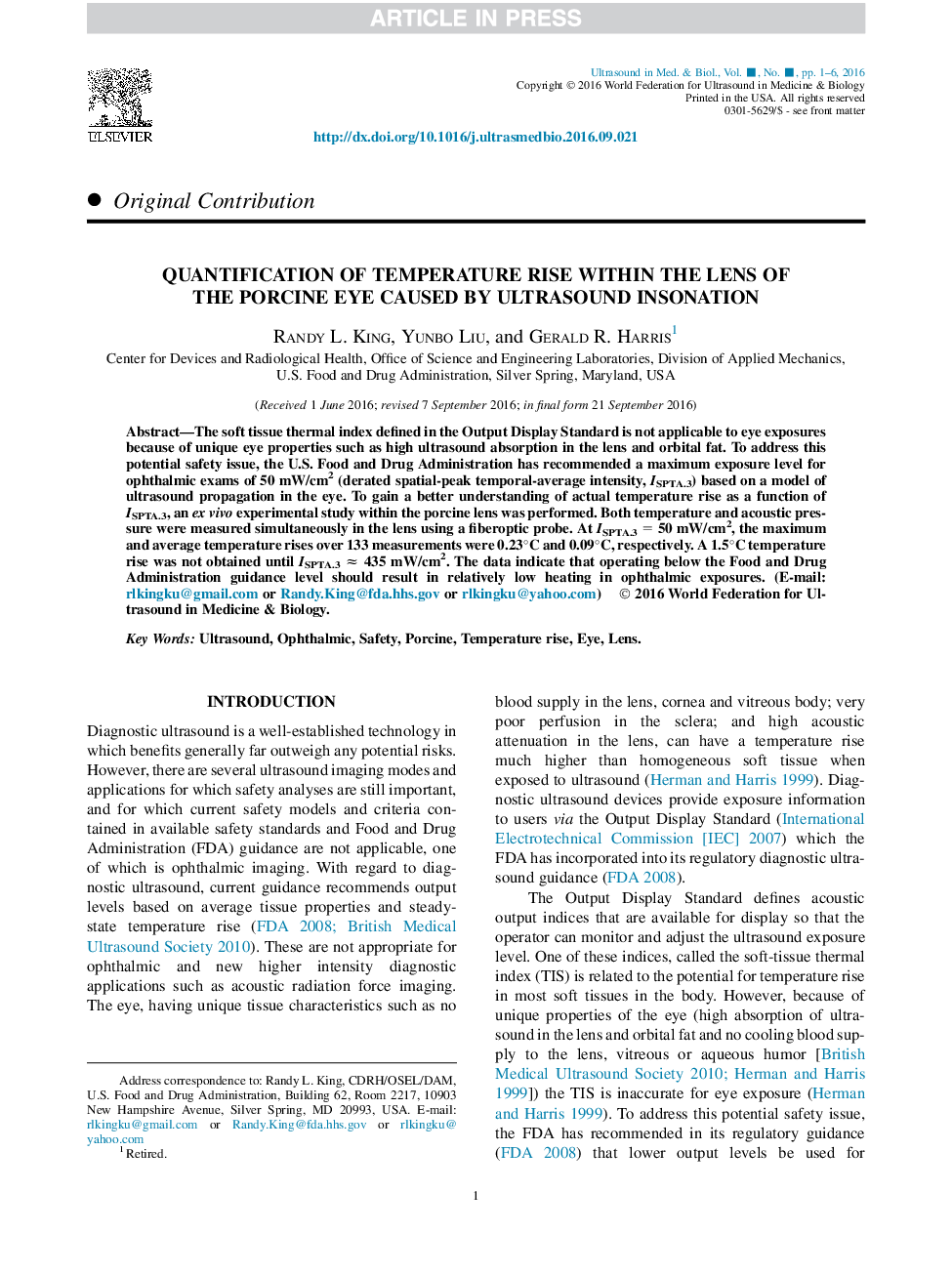| Article ID | Journal | Published Year | Pages | File Type |
|---|---|---|---|---|
| 5485703 | Ultrasound in Medicine & Biology | 2017 | 6 Pages |
Abstract
The soft tissue thermal index defined in the Output Display Standard is not applicable to eye exposures because of unique eye properties such as high ultrasound absorption in the lens and orbital fat. To address this potential safety issue, the U.S. Food and Drug Administration has recommended a maximum exposure level for ophthalmic exams of 50 mW/cm2 (derated spatial-peak temporal-average intensity, ISPTA.3) based on a model of ultrasound propagation in the eye. To gain a better understanding of actual temperature rise as a function of ISPTA.3, an ex vivo experimental study within the porcine lens was performed. Both temperature and acoustic pressure were measured simultaneously in the lens using a fiberoptic probe. At ISPTA.3 = 50 mW/cm2, the maximum and average temperature rises over 133 measurements were 0.23°C and 0.09°C, respectively. A 1.5°C temperature rise was not obtained until ISPTA.3 â 435 mW/cm2. The data indicate that operating below the Food and Drug Administration guidance level should result in relatively low heating in ophthalmic exposures.
Related Topics
Physical Sciences and Engineering
Physics and Astronomy
Acoustics and Ultrasonics
Authors
Randy L. King, Yunbo Liu, Gerald R. Harris,
